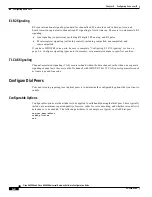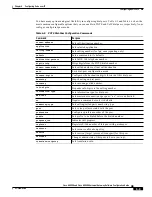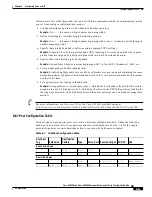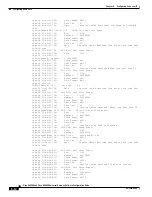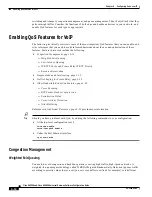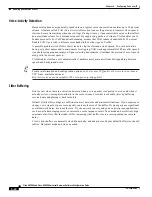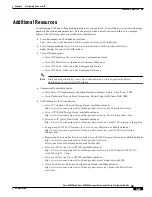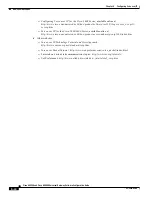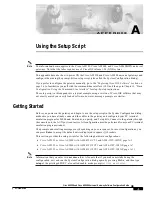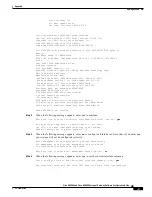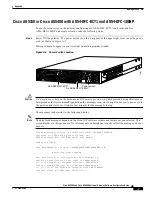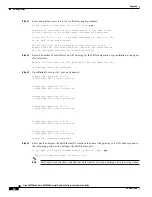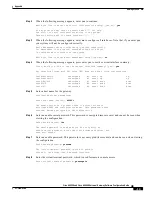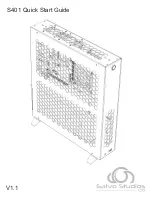
6-22
Cisco AS5350 and Cisco AS5400 Universal Gateway Software Configuration Guide
OL-3418-02 B0
Chapter 6
Configuring Voice over IP
Enabling QoS Features for VoIP
Voice-Activity Detection
Because telephone users generally speak in turn, a typical voice conversation contains up to 50 percent
silence. A feature called VAD (Voice Activity Detection) causes the gateway to transmit when speech
starts and cease transmitting when speech stops. During silences, it generates white noise so that callers
do not mistake silence for a disconnected call. By suppressing packets of silence, VAD enables you to
handle more calls. For VoIP bandwidth planning, assume that VAD reduces bandwidth by 35 percent.
Enable VAD if you wish to allocate more bandwidth to other types of traffic.
A possible problem with VAD is that it tends to clip the start and end of speech. To avoid activation
during very short pauses and to compensate for clipping, VAD waits approximately 200 ms after speech
stops before stopping transmission. Upon restarting transmission, it includes the previous 5 ms of speech
along with the current speech.
VAD disables itself on a call automatically if ambient noise prevents it from distinguishing between
speech and background noise.
Tip
For more information and configuration options, see Voice over IP Quality of Service for Low-Speed
PPP Links, available online at
http://www.cisco.com/warp/public/788/voice-qos/voip-mlppp.html
Jitter Buffering
Jitter occurs when there is a variation between when a voice packet is expected to arrive and when it
actually arrives, causing discontinuity in the voice stream. Cisco devices handle jitter by buffering
received data and playing it back smoothly.
Default jitter-buffer settings are sufficient in most networks under normal situations. If you experience
choppy voice signals or poor voice quality, increase the size of the buffer. If you experience significant
overall network delay, decrease the size. If your network is noisy and you use jitter-prone applications
such as unified messaging server or interactive voice response, select fixed mode and a relatively high
nominal value. Note that the trade-off for increasing jitter-buffer size is a corresponding increase in
delay.
Cisco’s jitter buffers are normally sized dynamically, and adaptive mode plus default buffer size should
suffice. But adjust mode and size as needed.

